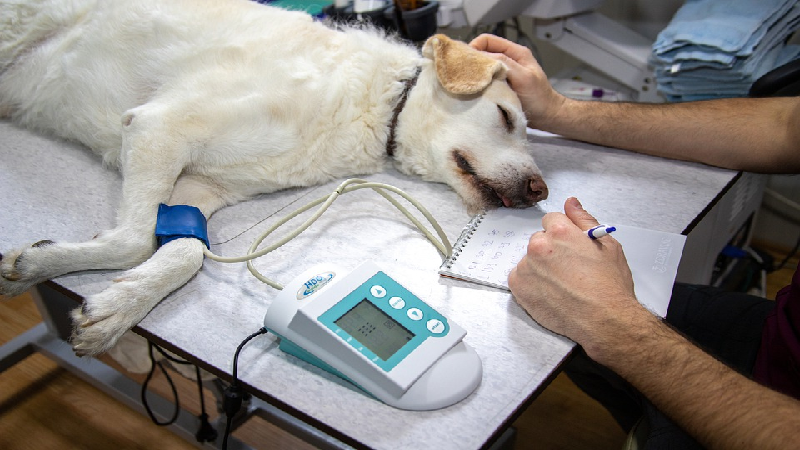Here we discuss When to euthanize a dog with Cushing’s disease? When the vet pronounces the phrase we never wanted to hear: “He is a few weeks old”, or, worse, “all that remains is euthanasia”, the world falls on us. And we feel it all, in its infinite weight. We cannot speak or think. We can’t even move. We are paralyzed, while the most beautiful images spent with our puppy pass in front of us. Faced with the most intense memories we feel our hearts break. The vet’s words of circumstance are useless. It’s the end. The end of everything, of the rides in the park, of the walks by the sea, of the evenings, spent curled up on the sofa, under the blanket, in front of the TV.
Suddenly, his lament quickly brings us back to reality: lying on the bed, he looks at us with his little dull eyes in need of love, now more than ever. Thus, we feel in front of our friend who has stopped wagging his tail, but who seems to have understood everything. And he is ready to accept death with dignity, with silent suffering. It seems to know how to welcome the passage to the other world (more than us), just as it welcomed life. Without fear. Our presumption of wanting to control everything, in front of his behavior arises in all its uselessness.
And here comes the most delicate point, when to euthanize a dog with Cushing’s disease, the Daily Mail writes, after having collected a series of testimonies: the veterinarians reveal what is the most difficult moment ever for the animal that is dying and what is the mistake that the owners make, in those delicate last moments of their playmate’s life
In this article, we express our very personal opinion on when it is right to do it, and when not. The fact remains that each of us is free to act according to conscience and make the decisions that we deem most right.
Premise
In this article, we will only deal with When to euthanize a dog with Cushing’s disease, euthanasia involving dogs with serious, disabling, or painful pathologies. We do not even take into consideration the hypothesis of euthanasia for aggression, which unfortunately happens much more frequently than we think.
It is often practiced by unscrupulous veterinarians, whose degree should be revoked, and who tarnish the reputation of the entire order of veterinarians.
When is it right to do it?
It all depends on the quality of life of the dog, and on its degree of suffering. Both of these parameters are too generic, however, and therefore interpretable.
If the dog can only stand once in 4 days, some will think it is a great achievement, that he is improving, that he will recover.
They do not give up on the idea that the dog has an incurable disease and is suffering enormously. Everything is interpretable, and we always try to interpret the facts in a selfish way.
There are those who say that it should never be done, that it is unnatural, against all ethical rules. Everyone should be free to die as and when they like, they say.
Quite right, it is flawless. However, there are some things to take into consideration when we have the misfortune of having to witness the end of our dog’s life. one of these is that keeping him alive with drugs is equally unnatural.
I read somewhere that you should make a list of the 5 activities you did with your dog, and if 3 of these can no longer be done then you should break down.
We cannot think about the death of our dog in mathematical terms. Behind every choice of this kind, there is a feeling and years lived together. Mathematics if they keep it tight, we don’t need it.
To be taken into consideration in this difficult choice
When the situation becomes more critical it is good to take 3 things into consideration:
- Suffering
- Take Care of your Dog
- Take Suggestion from the Vet
Suffering

The first aspect to consider is the dog’s suffering. No one can actually know how much pain they feel, as it tends to mask the pain in every way.
A suffering animal is more exposed to the risk of an attack by a predator because it is weaker and with reduced ability to defend itself. In nature, therefore, there is a tendency to mask all suffering. The dog does not know that he is safe in a family and that no predator will ever attack him. Or rather: he knows he is safe but his instincts always tell him to keep his eyes open.
Since the dog has a very high pain threshold, when it gets to the point of showing it, it means that that pain is unbearable, excruciating, devastating.
Medicines can alleviate it, but if it is not a transient disease, or manageable with life-long therapy, euthanasia should be considered.
Take Care of your Dog

Every living being has the right to dignity. Nobody can or should take it away. It is absolutely necessary to ask questions with altruism, not thinking only of ourselves.
True, sometimes we are not ready, and we need more time to process it. We keep a dog alive artificially, stuffed with drugs without which it would not be alive.
For our personal need, dogs that have not been able to get up for many days are kept alive, with all that entails in terms of hygiene. Let’s not deprive a dog of dignity that has given us all of itself in recent years.
Forcing a dog to stay alive is just as unnatural as euthanasia. Which of the two choices deprives him of his dignity as a dog?
Take Suggestion from the Vet

In the same way that for the suffering, also for the life expectancy it is necessary to refer to the vet. Only he can give us an approximate estimate (sometimes blatantly denied by the facts) of how much time he has left to live.
These estimates come from experience, not from textbooks. So don’t be upset if the vet said 15 days and a month has already passed.
The response of each dog to suffering is completely personal and variable, but life expectancy must be evaluated together with the two previous parameters: suffering and dignity.
Important
Do not get advice from friends and relatives or from Zampefelici. Everyone has their say, but how many of them have lived alongside him for years? Nobody.
The risk of regretting having or not having done so is very high. Almost all of us tend to blame ourselves for how things went, but this comes from the fact that our little one is gone, we will never see him again, and his absence will be felt from the first day and for many years to come.
Blaming himself, or giving it to someone else will not bring him back to life.